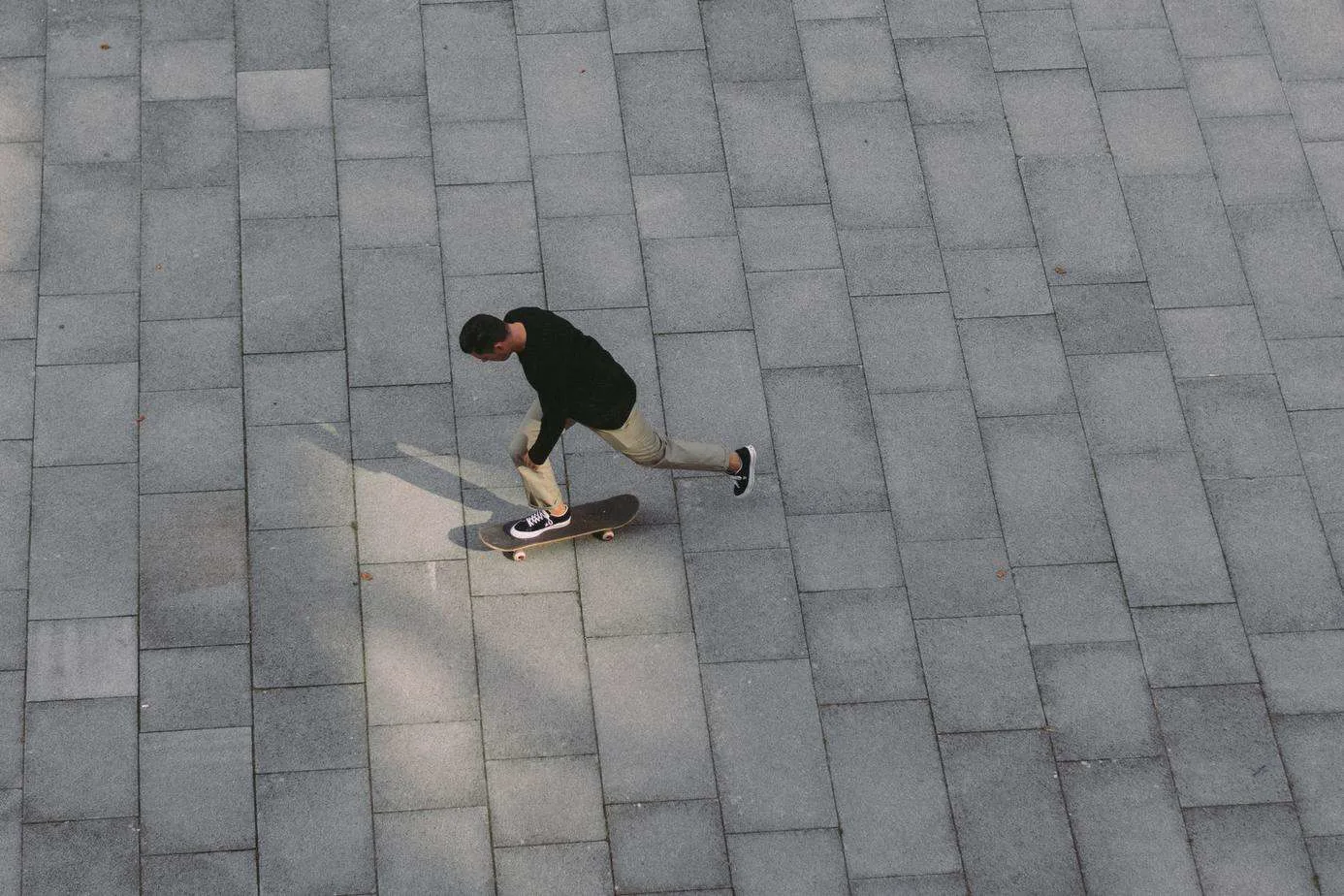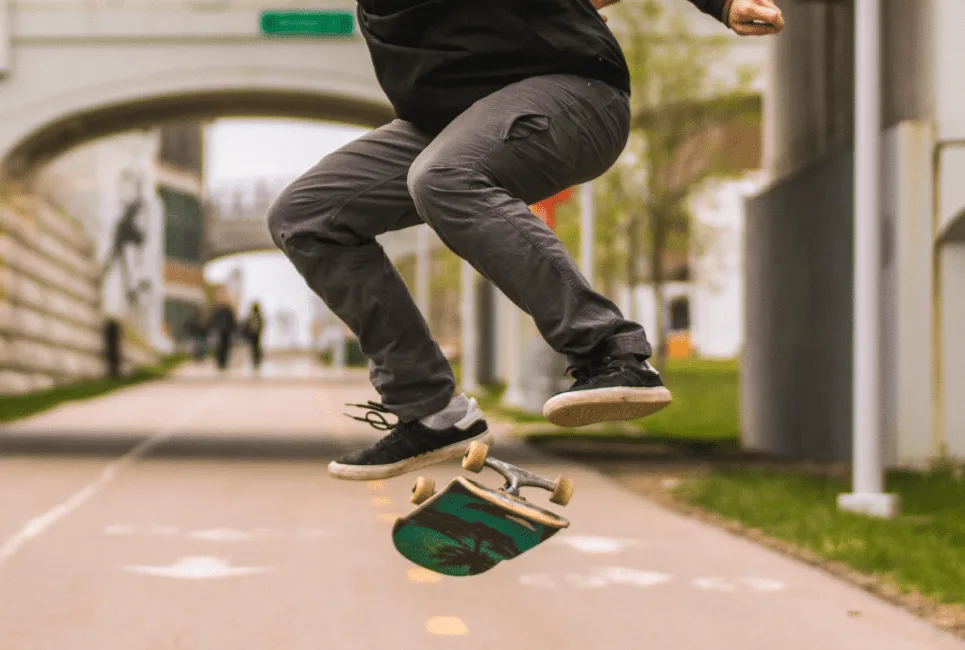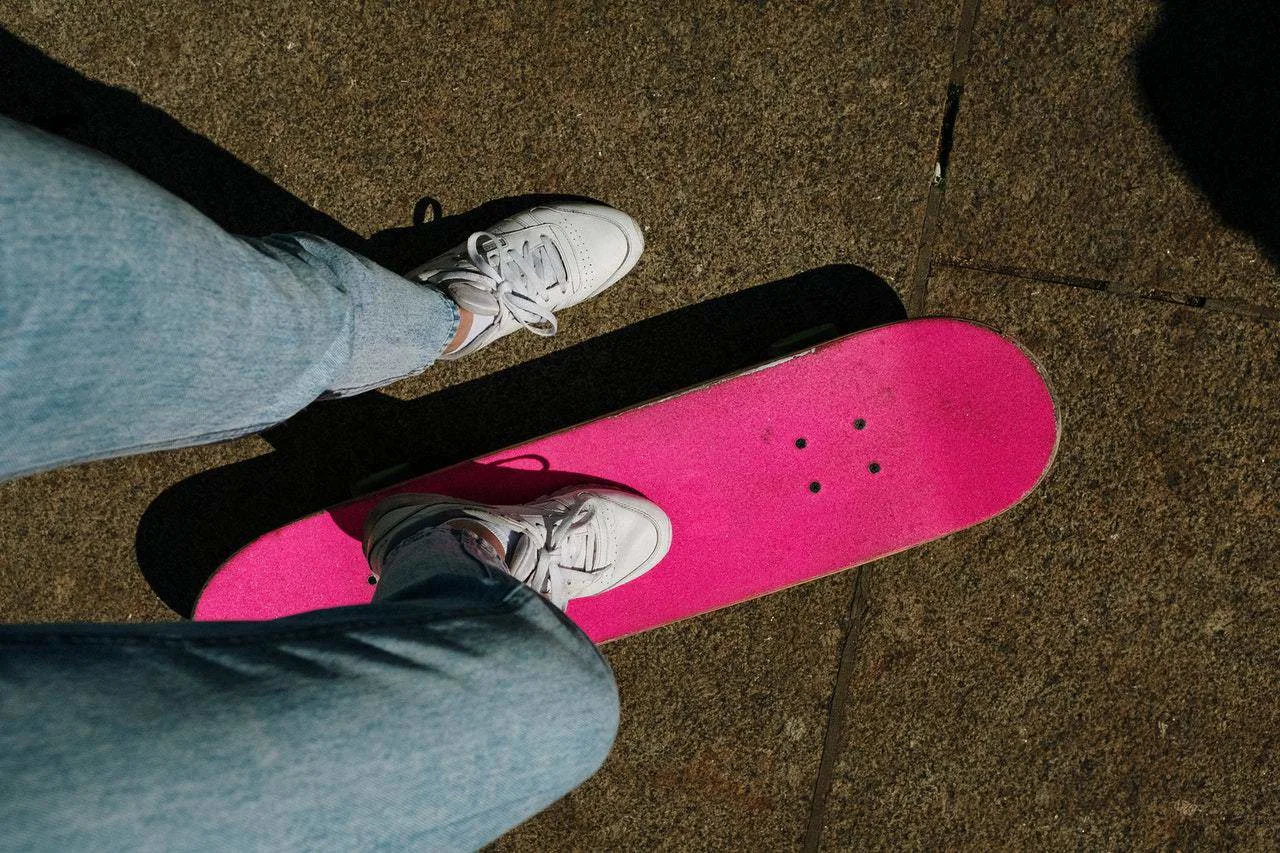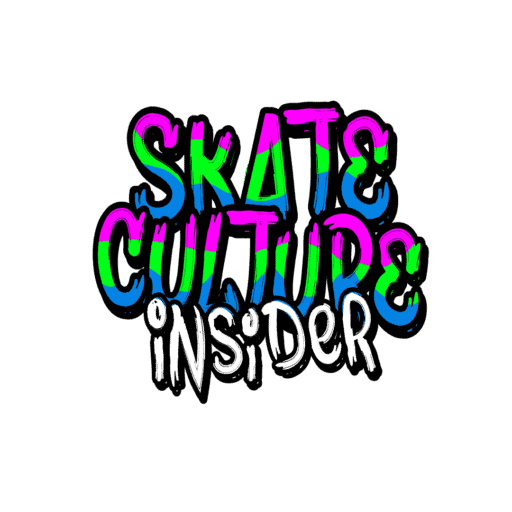- DGK Viper 8.125 Deck Review: An Overall Good Board - April 20, 2022
- Best Skateboard Bearings Guide: All You Need Consider - January 27, 2022
- Most Famous Old School Skateboarders - January 27, 2022
The world of skating is one that is chocked full of slang and terminology, most of which is completely incomprehensible from the outside looking in. This lingo is perhaps a means of separating the normies from the cool skater kids but also, a lot of this terminology has a technical purpose within the world of skateboarding. A lot of this terminology defines a certain tweak, style or stance that you add to a standard trick and can often make your trick all the more gnarly.
One area that can seem really complicated from the outside looking in, is the different stances in which one can stand on a board and approach certain tricks. This can be as simple as your default foot position, to riding backwards, in the opposite natural stance. It really depends on what you are going for and, believe us, we can see how this can get confusing, but we assure you, it’s all pretty straightforward. This is why we have put together a guide that will help.
This guide will help you understand what goofy and regular stances are, how to define which you are and give you some tips to work on becoming more ambidextrous. So without further delay, here is our guide to regular and goofy stances and more within skateboarding.
What is Goofy/Regular?
Let’s start things off by defining what the two titular stances are, shall we? Goofy and regular are essentially the two default foot positions that one will adopt as soon as you stand on a board. As soon as you choose your leading foot to stand on a board with, you have already made some headway in terms of deciding your default stance.
- Regular is a stance that sees the rider facing right with their toes pointing right, with their right foot on the tail of the board and their left foot on the truck bolts near the top of the board whereas goofy is basically the opposite of this. Skaters who ride goofy (much like myself) will face to the left with their toes hanging off the left of the board. They will have their left foot on the tail of the board and they will have their right foot placed on the truck bolts closest to the top of the board.
What are the Key Differences Between Goofy And Regular?
While a description of these two stances is obviously helpful, you may just be wondering what makes these two stances so different. After all, it’s just a way of standing on a board right? Well, not exactly. There are only two differences in truth but they are pretty huge ones that will define your skating career. One is the foot that you pop and push with, the other is your leading foot.
Picture it like this, a footballer is either left footed or right footed and is more proficient with one particular foot. When writing, you are able to legibably write with one hand and scribble with the other. These stances, while not necessarily governed or affected by your preferences for those things listed, in principle are effectively the same.
You will have a more comfortable stance depending on your preferences and standing facing left or standing facing right when on the board is the only difference between them, but it can be the difference between making quick progress or struggling to get the basics.

What Determines Your Natural Stance?
To find out which stance you are, for many it is as simple as standing on the board and looking down. Often you will subconsciously choose which stance is most comfortable. However, if you are a little more methodical than that, or a little timider when it comes to standing on a board for the first time, you can approach this question of stance with logic. For many skaters, it’s a question of which foot is their dominant one. Perhaps if you played a sport like American Football or Soccer, you might know what your lead foot is.
If you know this, then chances are, you will want to place this foot nearest to the tail. This is because this foot will be in charge of doing most of the pushing, popping and scooping when skating. This is not always the case though, as a lot of skaters will prefer using their non-dominant foot for pushing and popping. It’s really a matter of preference and you should always go with what is most comfortable.
If you can still not determine which of these stances feels the most comfortable, there are several tests you can do. You can walk up to a staircase and the foot you take the first step with is usually your dominant foot. You could also kick a ball as we mentioned or you could slowly roll on your board until you pick up the pace and see which foot you use to bring yourself to a stop.
What is the Most Common Stance?
As you might have guessed based on the names of the two stances, regular is the most common stance. However, the ratio is probably much closer than you think. While there are no global statistics, Jenkem conducted a 4,000 skater survey in the Tampa Bay area and concluded that 56% of skaters were regular and 44% of skaters are goofy. Now obviously, this can vary depending on who you happen to ask as so many factors and body composition differences can determine one’s natural stance. However, we would say that these numbers wouldn’t be too far away from the global figure.
What Pros are Regular/Goofy
As you would imagine with the ever-progressing abilities of modern-day skaters, at the top of the sport all skaters can skate pretty competently in any stance. However, every pro has a preferred stance that they find most comfortable and can land tricks on reliably. Now, we would be here all day if we named all the skaters that skate each stance. So why don’t we take twenty notable names from the sport and categorize them into their respective stances? Who knows, maybe you ride the same stance as your favorite pro. Check it out below:
- Nyjah Huston (Goofy)
- Chris Cole (Regular)
- Andrew Reynolds (Regular)
- Bucky Lasek (Regular)
- Bam Margera (Goofy)
- Eric Koston (Goofy)
- Rodney Mullen (Regular)
- Danny Way (Regular)
- Bob Burquist (Regular)
- Tony Hawk (Goofy)
- P Rod (Goofy)
- PJ Ladd (Regular)
- Jamie Thomas (Regular)
- Daewon Song ( Goofy)
- Mike Carroll (Goofy)
- Ryan Sheckler (Regular)
- Chad Muska (Regular)
- Andy Anderson (Goofy)
- Aurélien Giraud (Goofy)
- Chris Joslin (Regular)
It is also worth noting that some of these pros skate different categories of skating differently. For example, Leandre Sanders was famously known for skating regular on street but carving a bowl goofy. As we said, it depends on how to feel most comfortable and sometimes the answer isn’t as simple as black or white.
What Is Switch Stance?

You may have heard the term ‘switch’ tossed around when you were at the skatepark, often in sentences like ‘Was that Switch?’ Or ‘Yeah, but can you do it switch?’. To help you understand what this word means, firstly it’s another stance within skateboarding. This is the term that is used when you ride in the stance that is least comfortable to you. So if you ride goofy, if you do a trick regular, it’s, therefore, switch and vice versa.
Aside from perhaps a nollie version of a trick which is almost, if not equally as tricky, this stance is the hardest to pull a trick off in. So if you happen to watch any live skating competitions and someone does a trick switch, there are almost guaranteed to get more points than a competitor that does the same trick in a standard stance, even if the trick is cleaner.
What is Fakie Stance?
The fakie stance is the fourth and final official stance that you will encounter within skateboarding. This is a stance that essentially sees you ride in your natural stance with your foot position exactly the same as it would be normally, however, for it to be fakie, you will need to be moving backwards. This will mean that if you pop any tricks, you will still be doing it with the tail of the board and will still be using your dominant/preferred foot.
This can be a tricky stance to learn flip tricks as balance can be an issue. However, for tricks like pop shuv-its and fakie big spins, this stance can actually help complete the trick as the board will scoop and rotate much easier due to the backwards momentum. So it’s something for you to experiment with for sure.
What is Mongo Pushing?
This is an unofficial stance/pushing method within the world of skating that is vilified and often makes the skater performing such an act the laughing stock of the skatepark. Mongo pushing is essentially pushing with the foot that would normally be on the top end of the board and standing near the tail of the board with your dominant/preferred foot used for popping/turning etc.
This is an act that looks awkward, uncomfortable and for most who are accustomed to normal stances, will be genuinely difficult to even replicate. Not that you would ever want to, obviously. In short, it’s a surefire way to get laughed right out of the skatepark, so do yourself a favour. Don’t push mongo.

What is the Best Way to Learn Both Stances (Ride Switch)?
While we would urge new skaters to keep true to their natural stance for quite a while before they go trying new stances, once you feel up to it, you might want to try and ride switch and even perform some simple tricks. This will initially feel alien to you at first, especially if you have been practising regularly with the other stance. However, we would say stick with it and before you know it, you’ll look less like a newborn lamb on a skateboard and more like a competent skater.
To help you with this process, here are a couple of things you should do to make riding switch easier:
- Push with the other foot: While doing the tricks you can do in your normal stance may be a few steps beyond what you are comfortable with when riding switch. The act of standing on a board and pushing it while riding switch, while uncomfortable, will likely be doable for you. So what we would suggest is that you try to spend a few weeks worth of skating sessions only pushing with your weaker foot. This will normalise the movement and make the process of learning switch tricks much easier.
- Replicate Your Movements: When riding switch, you are doing the same thing, just with the opposite legs. So the best thing that you can do is video yourself performing a trick in your natural stance, then do the same when performing this movement switch. Then analyse the footage, work out the key differences between these two movements and try to correct and align these two movements. This is by no means easy and will take time but this should put you on the right track.
Take A Stance
As you can see from the information above, the stance terminology within skateboarding can seem strange and confusing. However, when you break down all these terms, you realise that it’s all fairly straightforward. We hope that this gives you a clear idea of what each of these stances is, what your preferred stance is and how to approach the more difficult stances within the sport. Now get out there and get shredding.
FAQ Section
If you have reached the end of this guide and you still have some pressing skateboarding questions, maybe our FAQ section will clear up some of those issues. Check it out below:
Answer: While there is no concrete evidence to support this theory. It is widely believed that the term Goofy to describe a right foot forward stance is based on a Disney Cartoon starring the beloved Dog character of the same name in a 1937 short titled Hawaiian Holiday. In this cartoon, Goofy is surfing and stands on the board in this exact stance, hence coining the term goofy. However, it could also be down to the fact that this stance is considered rightly or wrongly to be the least common of the two stances and hence, was given a somewhat derogatory name. I guess we will never truly know.
Answer: After you decide on the stance that works best for you, you’ll want to get on the board and start shredding. However, being a beginner, it can be a rather frustrating and difficult sport to conquer at first. So it’s best to work your way up the difficulty charts, nail the basics and then once you feel up to it, go for something that will impress all your pals. Don’t be discouraged, no one goes out there and nail a tre-flip in the first five minutes. With that in mind, here are some basic moves that you should nail after you get your stance locked down:
Standing on/getting off the board
Pushing on the board
Moving with a running start
Stopping while moving
Turning in place
Kick turns
Manuals
Caveman’s
Boneless
Sex changes
Going down curbes/ledges
Ollies
Answer: While it isn’t a stance, it is something that probably belongs amongst the other definitions. Primo is a certain way of landing that isn’t all that pleasant if you don’t mean to do it. But, can look pretty sweet if you intend to balance the board this way. Primo essentially means landing or propping up the board with the front of the wheels facing the ground and the thin side of the board balancing on the ground. This is something that is often done by freestyle skaters and can look very stylish if done properly. However, it is also done most commonly by skaters who have not rotated flip tricks enough and is a potential ankle breaker, so when landing, be sure to look out below.
So that is our guide explaining the different skateboarding stances. What did you make of this guide? Was this helpful and informative for you? Are there any other skateboarding guides that you would like to see in the future? Let us know in the comments section below and as always, thank you for reading Skate Culture Insider.
For more interesting reading, check out:

